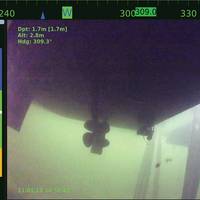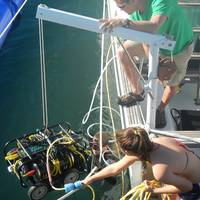Tech Talk: Managing Ship Biofouling During Layups due to COVID-19

Biofouling control measures for ships are usually selected to match their operational profiles, and so what happens when constant service ships become idle for prolonged periods or operate at slower service speeds? Will they become vulnerable to fouling, and what measures can be taken to reduce the risk? These questions can best be answered by understanding the biology of the waters in which the vessels are located, the ecology of the different immersed parts of the ship, the biofouling control methods that have been applied or in use…
The Future: Autonomous Robotic Hull Grooming

Ship hull biofouling has significant impacts on fleet readiness, ship performance, cost, and the environment. Biofouling results in increased hydrodynamic drag which results in greater fuel use and greater emissions per distance traveled than a hydraulically-smooth hull. A study by Schultz, et al. found the typical fouling rating (FR) of a US Navy DDG-51 class vessel, FR-30, increases fuel consumption by 10.3% over a hydraulically-smooth DDG-51. Results showed that reducing this…
SeaRobotics Delivers Autonomous Hull Cleaning System

SeaRobotics has delivered the first HullBUG (Hull Bio-inspired Underwater Grooming) System to the Center for Corrosion and Biofouling Control at Florida Institute of Technology in Melbourne. This will be tested and further developed at the newly commissioned Large Scale Seawater Facility , which is located at Port Canaveral and funded by the U.S. Navy Office of Naval Research (ONR). The HullBUG system is an autonomous underwater vehicle designed to crawl on ship hulls or other underwater structures and "groom" their surface.







